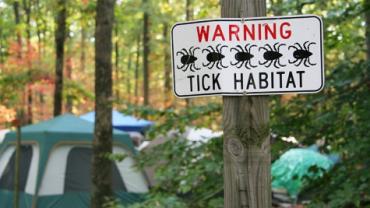
Summer is peak season for transmission of Lyme disease.
The only known transporter of Lyme disease bacteria the deer tick goes through the most infectious stage of its life cycle in the summer. But you don't need to be in contact with a deer to get a deer tick bite and Lyme disease.
Deer ticks can hitch a ride on small animals and land right in your backyard.
Here is a case study that highlights why Lyme disease is a mystery illness.
Anne had been diagnosed with 3 different autoimmune diseases each by a top specialist:
Two of the specialists wanted to treat her with immune suppressive drugs a decision that would have been counterproductive given the fact that her real diagnosis was Lyme disease an infection spread by a tick bite.
Tick Bite Leads to Lyme Disease
Anne had suffered a tick bite 5 years ago about 6 months before the onset of her arthritis and had been treated with an antibiotic doxycycline for 3 weeks. Subsequent testing of her blood for antibodies to the Lyme bacteria were negative on 4 separate occasions. Her doctors therefore discounted the idea that Lyme disease could be causing her chronic illness.
Two Key Points about Lyme Disease:
The Infectious Diseases Society of America has stated that 3 weeks of antibiotics will cure over 95 per cent of people with Lyme disease. But many experts have challenged these treatment guidelines for Lyme disease as being inaccurate. As I see it even if the Infectious Diseases Society of America's guidelines are accurate they are grossly inadequate: a failure rate approaching 5 per cent for a curable disease is unacceptable.
New Cases of Lyme Disease
Let's check the math: At present there are about 30000 new cases of Lyme disease reported to state health departments each year. Everyone acknowledges that under-reporting is the rule so that there are undoubtedly many more cases of Lyme disease acquired in the U.S. every year. The annual incidence is probably more than 100000 new cases of Lyme disease each year.